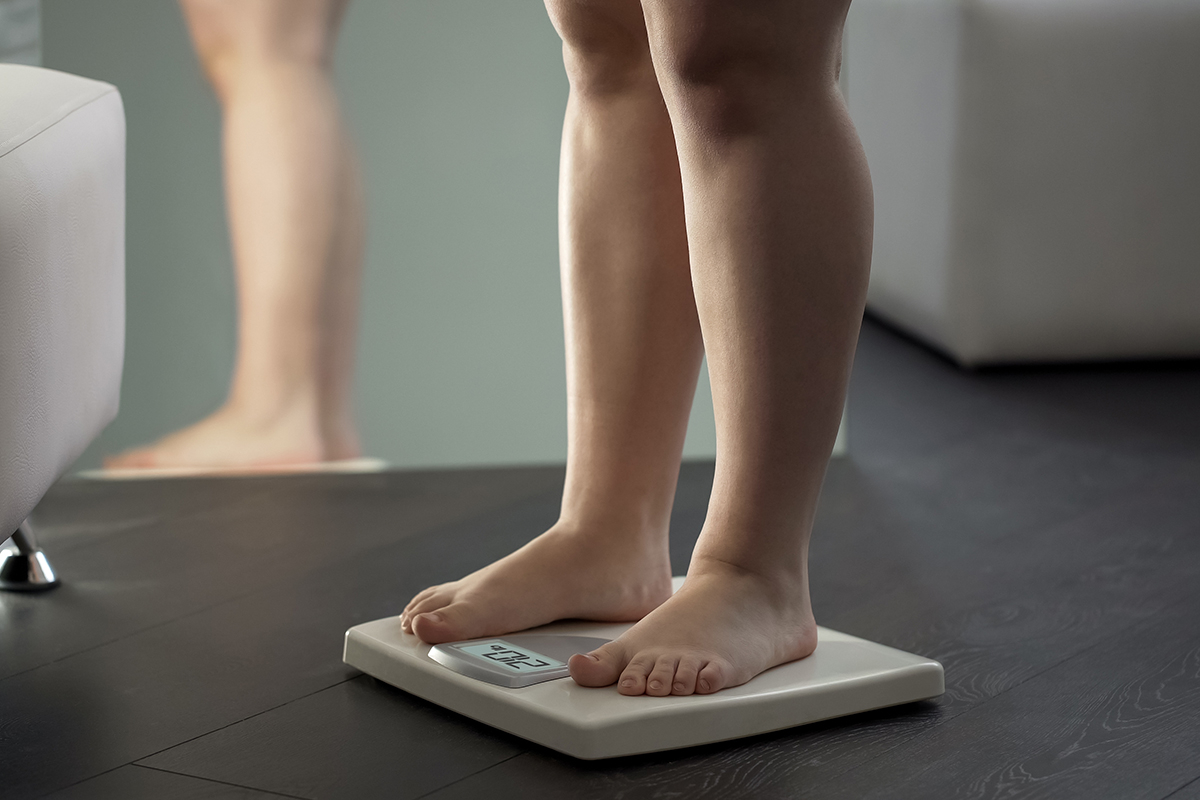
Obesity is defined as excessive or abnormal fat accumulation in the body to the extent that it impairs health, and it is a condition that affects the whole body. Approximately 600 million of the 1.9 billion adults described as overweight in the world are obese. It is estimated that obesity will reach 1 billion people by 2030 (1,2).
The increase in obesity worldwide has led to the development of treatments for weight loss and improvement of obesity-related complications. Nowadays, bariatric surgery is very common because it has long-term effectiveness. Having a "Body Mass Index (BMI)" used in the diagnosis of obesity ≥ 40 kg/m2 or having a BMI ≥ 35 kg/m2 and obesity-related co-morbidity are necessary conditions for bariatric surgery. It has been proven by studies that there is a regression in obesity-related chronic diseases after bariatric surgery and that the quality of life of patients increases. These processes started to be implemented in the 1950s and different types emerged over time (3).
Adjustable Gastric Band (AGB)
An adjustable gastric band is a device made of silicone that is placed in the upper part of the stomach to limit the amount of food a person can eat. Its effect on obesity-related diseases and long-term weight loss is less than other procedures. Therefore, its use has decreased in the last decade. This device is placed in the upper part of the stomach, a small pouch is created and fixed there. It does not affect hunger and satiety hormones and absorption, but the feeling of satiety depends on the size of the opening between the pouch and the rest of the stomach (4).
It is a reversible process and the tape can be removed if necessary. It has the lowest complication after surgery because there is no stomach or intestinal division. It has the lowest risk for vitamin and mineral deficiencies but is less successful against type 2 diabetes.
Compared to other surgical procedures, there is a slower and less weight loss. Monthly check-ups may be needed during the first year, as there is a risk of swallowing problems, enlargement of the esophagus, slipping of the band, or damage to the stomach over time (4).
Sleeve Gastrectomy (SG)
“Sleeve Gastrectomy”, commonly known as “tube stomach”, is the process of removing approximately 80% of the stomach. The remaining stomach is shaped and the size of a banana. Since the part where most of the hunger hormone is produced is removed, it reduces the feeling of hunger, increases the feeling of satiety and limits food intake. It can be applied as first-line treatment in patients with severe obesity with a Body Mass Index (BMI) >50 kg/m2. It is also a technique that improves type 2 diabetes, hypertension, and heart health at rates similar to gastric bypass (4-8).
Gastric sleeve surgery is a simple and shorter procedure. However, it is an irreversible application. The most serious complication is leakage from the stomach into the abdominal cavity, but this risk is very low. However, it can cause heartburn or reflux.
Vitamin and mineral supplementation is important in the first year after the procedure, as vitamin and D vitamin and iron deficiencies can be seen after the surgical procedure due to the changing stomach size and absorption (2, 4, 5, 9)
Roux-en-Y Gastric Bypass (RYGB)
Roux-en-Y Gastric Bypass, known as the “gastric bypass” and considered the “gold standard” in bariatric surgery, reduces the size of the stomach and facilitates weight loss by changing the way the stomach and small intestine absorb nutrients (4, 10).
First, a small egg-sized sac is divided from the upper part of the stomach. The remaining major portion of the stomach can no longer store and digest food. Then the small intestine is divided and the lower end of the divided small intestine is connected to the small stomach sac. Finally, the upper part of the divided intestine connects to the small intestine from below. Gastric acid and digestive enzymes from the bypassed stomach and the first part of the small intestine mix with the eaten food (4, 10, 11).
Because the newly formed gastric pouch is smaller, it holds less food, which means you consume fewer calories. Hormone balances related to hunger and satiety change and you feel full after eating a small amount. In addition, nutrients do not come into contact with the first part of the small intestine, which leads to reduced absorption (4, 10, 12).
After gastric bypass, long-term weight loss (60-80%) occurs and the results are permanent. Data show that most patients maintain more than 50% of their weight loss up to 20 years after surgery. However, if appropriate care is not provided, long-term complications may occur (4, 11). One of the important advantages of this surgical application is that it helps to reduce the symptoms of type 2 diabetes, reflux, asthma attacks and hypertension caused by obesity after the procedure (4, 10). Individuals need to take vitamins and minerals for life, as their absorption will decrease after gastric bypass. Otherwise, long-term deficiencies of especially B12 and vitamin D, iron, folate and calcium occur (2, 4, 10, 11).
Biliopankreatik Diversiyon ± Duodenal Switch (BPD±DS)
The BPD-DS procedure is similar to a gastric bypass where the small intestine is not used any more (about 75%). The process begins with the creation of a tube-shaped gastric pouch, similar to the sleeve gastrectomy. Following the creation of the tube stomach, the first part of the small intestine is separated from the stomach. A portion of the small intestine is then lifted up and attached to the newly formed stomach. Thus, the food goes to the last part of the small intestine after the stomach. This causes a significant reduction in the absorption of nutrients. Therefore, patients should take vitamin and mineral supplements (4,9).
BPD-DS reduces hunger, increases satiety, and affects gut hormones to improve blood sugar control even more than gastric bypass and sleeve gastrectomy surgery. The smaller stomach in the shape of a banana allows patients to eat less. This procedure is considered the most effective metabolic operation approved for the treatment of type 2 diabetes (4,9).
Single Anastomosis Duodeno-Ileal Bypass with Sleeve Gastrectomy (SADI-S)
The Gastric Tube Single Anastomosis Duodenal-Ileal Bypass, referred to as SADI-S, is the latest procedure approved by the American Society of Metabolic and Bariatric Surgery. While similar to BPD-DS, SADI-S is simpler and takes less time to perform (4, 9).
SADI-S is a procedure that both restricts food intake and affects absorption. Therefore, although data on long-term outcomes are scarce, there is a risk of nutrient deficiencies.
It is very effective in long-term weight loss and control of type 2 diabetes. It is an excellent option for patients who already have sleeve gastrectomy surgery and want to lose more weight (4, 9).

Obesity is defined as excessive or abnormal fat accumulation in the body to the extent that it impairs health, and it is a condition that affects the whole body. Approximately 600 million of the 1.9 billion adults described as overweight in the world are obese. It is estimated that obesity will reach 1 billion people by 2030 (1,2).
Detail
Obesity, which has become a chronic public health problem all over the world, is a treatable health problem. Surgical or non-surgical methods are commonly used in the treatment of obesity.
Detail
Type 2 diabetes, known as diabetes mellitus among the people, is a disease that occurs due to unhealthy and malnutrition, inactivity and irregular life.
DetailFor all your questions, comments and suggestions,
you can contact us via the form below.
Gürlife Hastanesi
Obezite ve Diyabet Cerrahisi
Fevzi Çakmak Mah. Akınsel Sok. No:1
Tepebaşı Eskişehir
0552 200 59 69
+90 507 350 07 26 (EN)
You can reach us through our social media channels,
you can be informed about innovations.